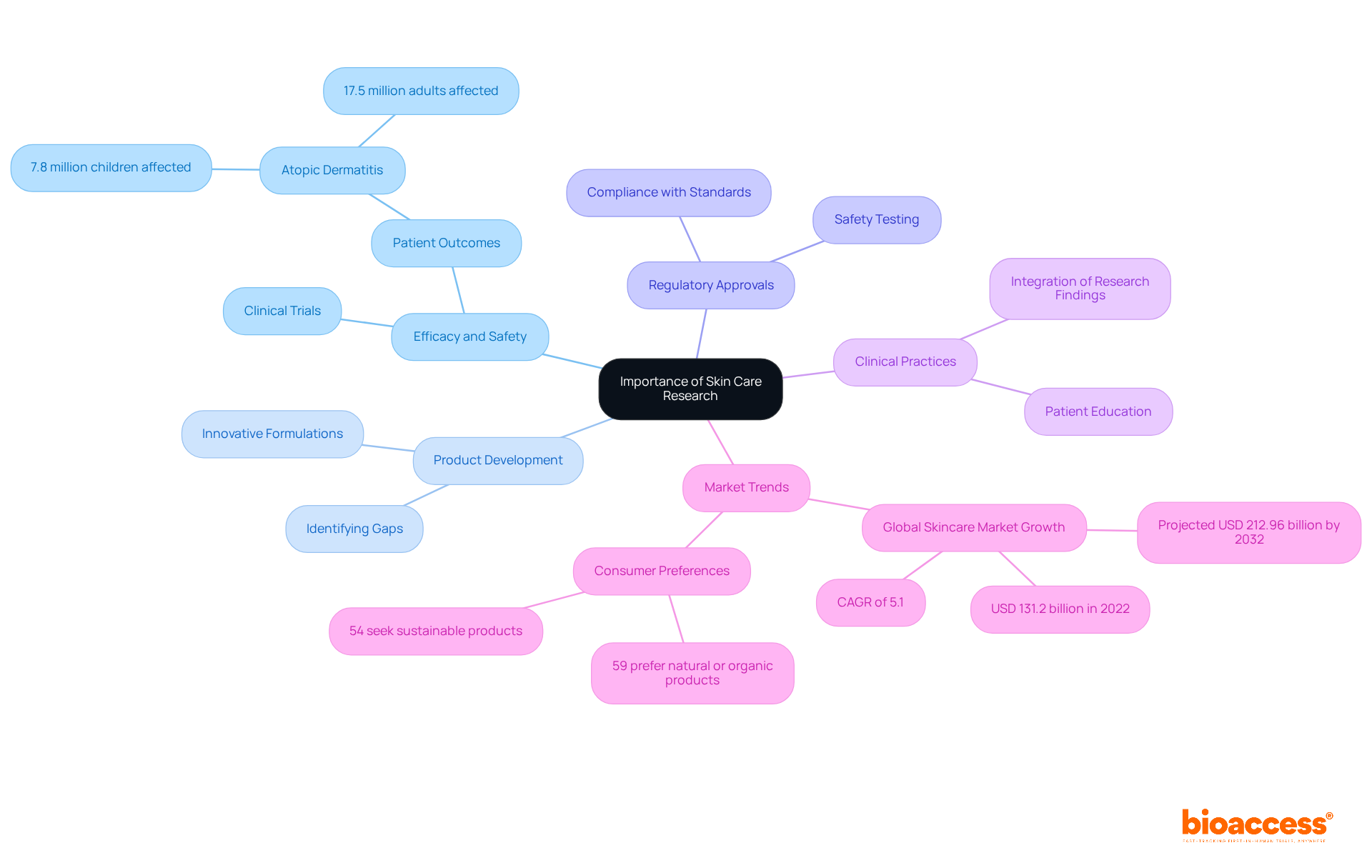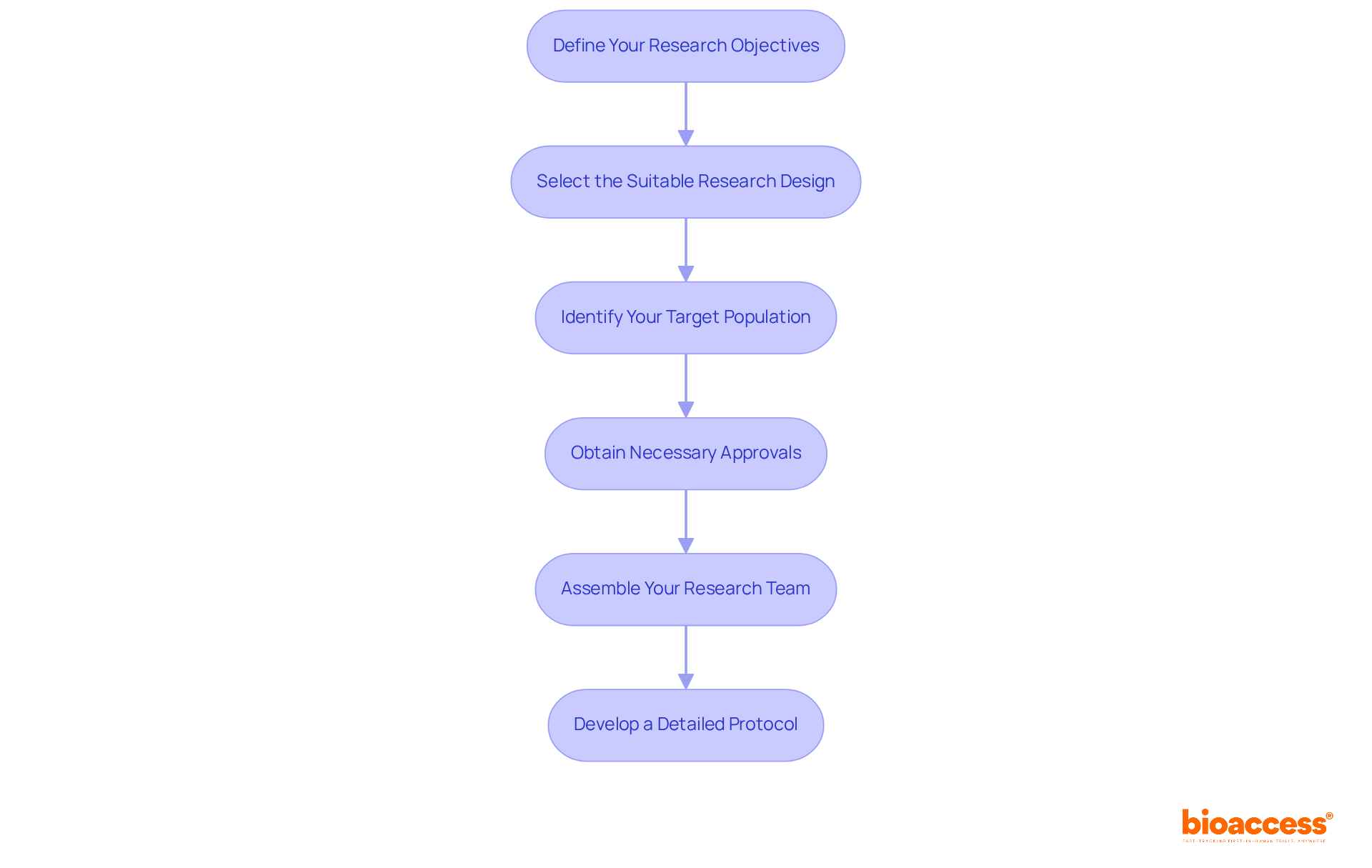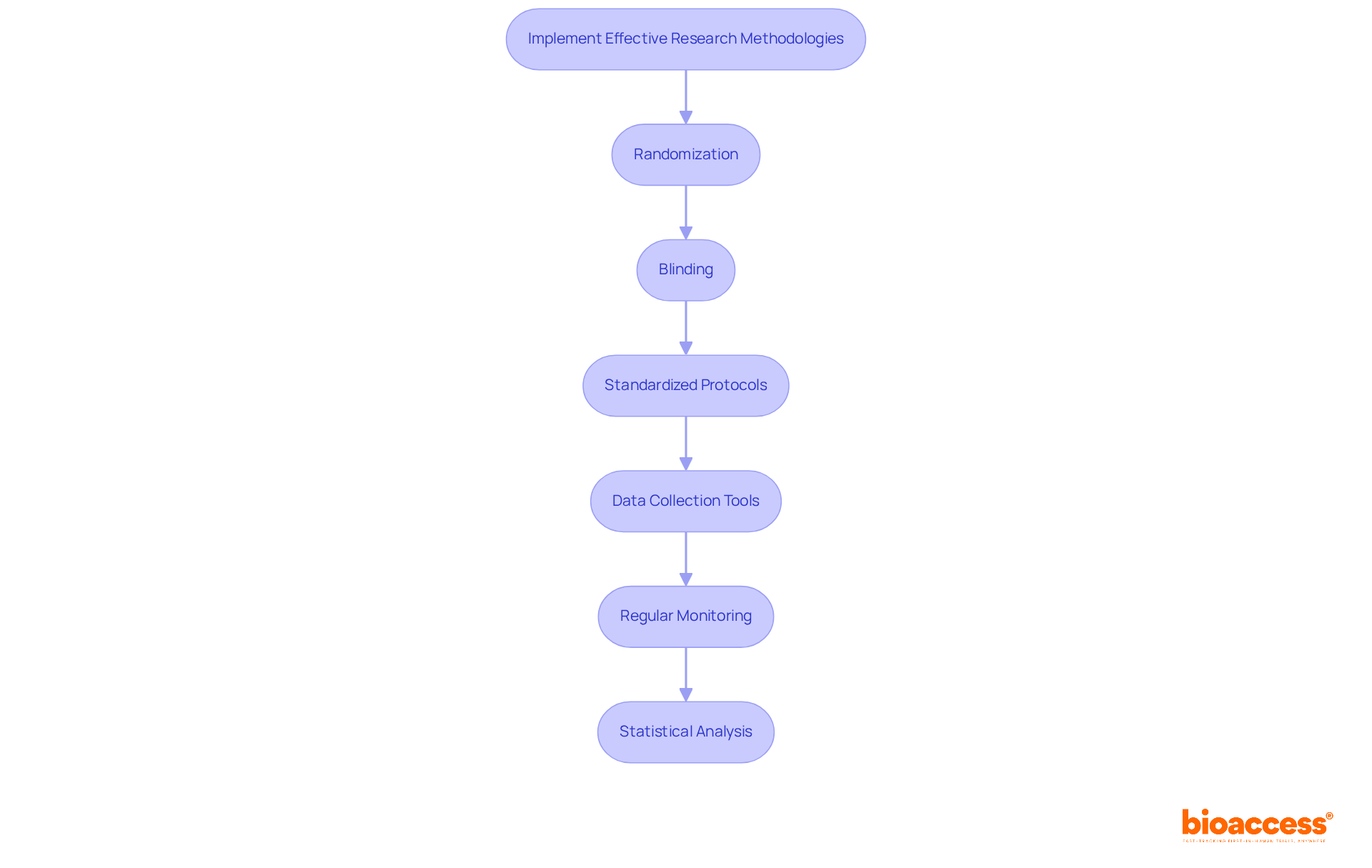


The article underscores the critical role of skin care research for clinical directors by delineating essential steps for conducting studies that enhance product efficacy and improve patient outcomes. It articulates the necessity for:
These elements collectively ensure research findings make a meaningful contribution to advancements in dermatology and skin care practices. Such insights are vital for navigating the complexities of the Medtech landscape and addressing the challenges faced in clinical research. Ultimately, this emphasis on structured research is not just beneficial; it is imperative for fostering collaboration and driving innovation in the field.
Skin care research stands at the forefront of dermatological advancements, playing a crucial role in the development and validation of effective treatments. For clinical directors, understanding the intricacies of this research is not just beneficial; it is essential for enhancing patient care and navigating the rapidly evolving skincare market.
However, with the complexities of study design, regulatory requirements, and data analysis, how can clinical directors ensure their research efforts yield meaningful results?
This guide delves into the essential steps and methodologies that can empower clinical directors to master skin care research, ultimately leading to improved patient outcomes and innovative solutions in dermatology.
Skin care research is paramount for evaluating the efficacy and safety of dermatological products and treatments. They play a pivotal role in informing product development, regulatory approvals, and clinical practices. By engaging in thorough investigations, clinical directors can identify gaps in current treatments, explore innovative formulations, and ultimately enhance patient outcomes. This skin care research not only enhances scientific knowledge but also tackles urgent health challenges related to the integument faced by various demographics.
For instance, research has shown that effective management of conditions such as atopic dermatitis can significantly improve quality of life, with approximately 7.8 million children and 17.5 million adults affected by this condition in the United States. Furthermore, the global skincare market, valued at USD 131.2 billion in 2022, is projected to reach USD 212.96 billion by 2032, growing at a CAGR of 5.1%, reflecting a burgeoning demand for scientifically validated products.
As the American Academy of Dermatology asserts, 'Proper treatment can help manage conditions and enhance quality of life.' Recognizing the significance of skin care research enables clinical directors to align their projects with industry trends and patient expectations, ensuring that their initiatives yield meaningful advancements in skincare.

To effectively prepare for your skin care research study, consider the following essential steps:
Define Your Research Objectives: Clearly articulate the goals of your investigation, whether it's assessing the efficacy of a new product or analyzing the skin's reaction to specific ingredients. Establishing precise objectives is crucial for guiding your research direction.
Select the Suitable Research Design: Choose a research design that aligns with your objectives. Options encompass randomized controlled trials, regarded as the gold standard for assessing treatment effects, observational analyses for real-world insights, or comparative research to benchmark against existing treatments.
Identify Your Target Population: Determine the demographics of participants that best match your research criteria. Consider factors such as age, skin type, and underlying health conditions to ensure your findings are relevant and applicable.
Obtain Necessary Approvals: Secure all required ethical approvals and regulatory clearances before commencing your research. This includes obtaining Institutional Review Board (IRB) approvals and ensuring informed consent from participants, which is vital for ethical compliance and participant safety.
Assemble Your Research Team: Recruit a qualified group, including dermatologists, research coordinators, and data analysts, to support various aspects of the project. A well-rounded team enhances the research's credibility and operational efficiency.
Develop a Detailed Protocol: Create a comprehensive research protocol that outlines methodologies, timelines, and data collection processes. This document acts as a guide for your investigation, ensuring consistency and clarity throughout the process.
By carefully organizing your learning, you establish the foundation for successful implementation and dependable results, ultimately progressing the domain of dermatology and skin care research.

To implement effective research methodologies in your skin care study, it is essential to consider several key strategies that will enhance the reliability of your findings:
Randomization: When applicable, utilize randomization to assign participants to different treatment groups. This critical step helps eliminate bias, ensuring that results are directly attributable to the intervention.
Blinding: Employ blinding techniques, whether single or double, to minimize bias in participant responses and investigator assessments. This practice significantly enhances the credibility of your findings.
Standardized Protocols: Adhere to standardized procedures for product application, data collection, and participant evaluations. Such consistency is vital for maintaining the integrity of your research.
Data Collection Tools: Utilize validated tools and questionnaires to measure outcomes effectively, including skin hydration levels, elasticity, and participant satisfaction.
Regular Monitoring: Conduct regular oversight of the research to ensure strict adherence to protocols and to promptly address any issues that may arise.
Statistical Analysis: Plan for appropriate statistical analyses to accurately interpret your data. This includes determining sample size, significance levels, and analysis methods prior to the commencement of the study.
By applying these methodologies, you will not only improve the dependability of your results but also provide valuable insights to skin care research.

To effectively analyze and interpret your research findings, adhere to the following steps:
Data Cleaning: Initiate the process by meticulously cleaning your data to eliminate inconsistencies and outliers that could distort your results. This foundational step is crucial for ensuring the integrity of your analysis. As emphasized in the data-cleaning framework, focus on integrity, consistency, completeness, and accuracy to enhance the quality of your dataset.
Statistical Analysis: Utilize appropriate statistical analysis software to conduct your planned analyses. It is crucial to analyze the results within the framework of your goals, ensuring that the outcomes are pertinent and practical. Remember, as Carly Fiorina noted, the goal is to transform data into insights that can drive meaningful conclusions.
Compare with Hypotheses: Evaluate whether your findings align with or contradict your initial hypotheses. This assessment will inform your conclusions and recommendations, guiding future research directions. Statistical significance is vital, but it should also reflect real-world importance, as highlighted in various studies.
Consider Clinical Relevance: Beyond statistical significance, assess the clinical relevance of your findings. Comprehending how outcomes influence patient care and product effectiveness is essential for converting studies into practice. This consideration is crucial for ensuring that your research contributes positively to patient outcomes.
Prepare a Comprehensive Report: Compile your observations into a detailed report that encompasses methodology, results, discussions, and conclusions. This document will serve as a critical resource for stakeholders, facilitating informed decision-making.
Share Results with Stakeholders: Disseminate your results to relevant stakeholders, including sponsors, regulatory bodies, and the scientific community. Effective communication can occur through publications, presentations, or conferences, enhancing the visibility and influence of your findings.
By rigorously analyzing and interpreting your findings from skin care research, you contribute significantly to the advancement of skin care knowledge and practices, ultimately benefiting both patients and the industry.

Engaging in skin care research is essential for clinical directors aiming to enhance treatment efficacy and patient safety. Understanding the pivotal role of research in dermatology allows clinical leaders to address current gaps in treatment and contribute to the development of innovative solutions that meet the evolving needs of patients. This commitment to research fosters a culture of evidence-based practice, ultimately improving patient outcomes and aligning with industry trends.
Throughout this article, several key steps for conducting effective skin care research have been outlined:
Each phase is critical for ensuring the integrity and relevance of the study. The importance of ethical compliance, team collaboration, and robust data analysis cannot be understated, as they collectively enhance the credibility and applicability of research findings.
In summary, the significance of skin care research extends beyond individual studies; it shapes the future of dermatological treatments and contributes to the overall well-being of patients. Clinical directors are encouraged to embrace these essential steps and methodologies, ensuring that their research efforts lead to meaningful advancements in the field. By prioritizing rigorous research practices, they can drive innovation and improve the quality of care provided to diverse patient populations.
Why is skin care research important?
Skin care research is crucial for evaluating the efficacy and safety of dermatological products and treatments. It informs product development, regulatory approvals, and clinical practices, ultimately enhancing patient outcomes.
How does skin care research impact treatment development?
Through thorough investigations, clinical directors can identify gaps in current treatments, explore innovative formulations, and improve the management of skin conditions, which enhances scientific knowledge and addresses urgent health challenges.
What are some statistics related to skin conditions in the United States?
Approximately 7.8 million children and 17.5 million adults in the United States are affected by atopic dermatitis, highlighting the importance of effective management for improving quality of life.
What is the projected growth of the global skincare market?
The global skincare market, valued at USD 131.2 billion in 2022, is projected to reach USD 212.96 billion by 2032, growing at a compound annual growth rate (CAGR) of 5.1%.
How does the American Academy of Dermatology view skin care treatment?
The American Academy of Dermatology states that 'Proper treatment can help manage conditions and enhance quality of life,' emphasizing the importance of effective skincare research and treatment options.
How can clinical directors benefit from recognizing the significance of skin care research?
By understanding the importance of skin care research, clinical directors can align their projects with industry trends and patient expectations, ensuring that their initiatives lead to meaningful advancements in skincare.